From year to year the land can give a rich harvest of vegetables, fruits and everything else that grows in the garden or vegetable garden. Urea or urea compensates for the loss of nitrogen (N) that is inevitable after harvesting the fruits and tops. Granular fertilizer is used for all agricultural and ornamental crops, on any soil.
Material Content:
The formula and methods for producing carbamide
Urea is considered a chemical "bridge" between inanimate nature and living organisms. The chemical formula of the compound is CO (NH2) 2. Carbonic acid diamide or urea is a crystalline solid, colorless and odorless, readily soluble in water, non-toxic.
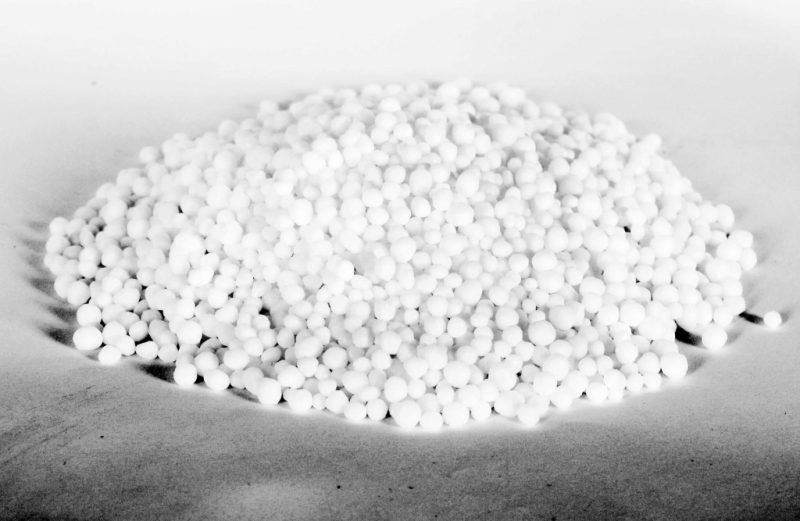
Urea is synthesized in industry from ammonia and carbon dioxide. The crystalline reaction product is granulated to improve physicochemical properties.
Useful properties of fertilizer for plants
Nitrogen is necessary for plants to create amino acids and proteins in cells. However, after each harvest, the amount of battery in the area is steadily decreasing, and losses must be made up. Gaseous nitrogen from the air, organic molecules containing element N, are not absorbed by either roots or leaves.
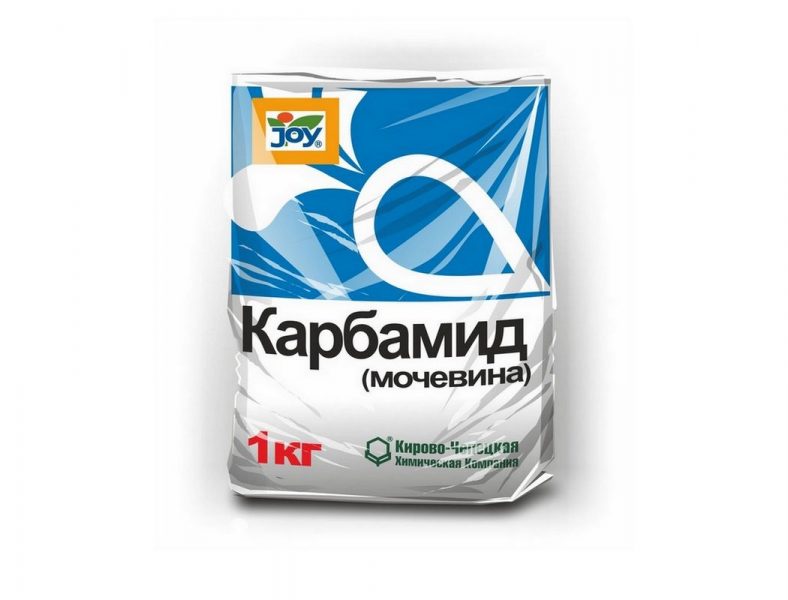
Signs of nitrogen starvation of plants:
- growth retardation;
- yellowing and falling of leaves;
- poor development of flower buds;
- small sizes of fruits;
- yield reduction.
The roots easily absorb ammonium salts and nitric acid (nitrates).They quickly dissolve and are absorbed by the roots, but can be washed out of the soil after applying appropriate fertilizers.
The most nitrogen-rich fertilizers:
- carbamide - more than 46%;
- ammonium nitrate - 35%;
- ammonium sulfate - 21%.
Urea contains nitrogen in the amide form. Urea is dissolved in the soil using soil bacteria that secrete the urease enzyme. The compound is subsequently converted to carbonate, then to ammonium bicarbonate and gaseous ammonia. Nitrogen from the composition of urea is absorbed gradually and positively affects the vital activity of the whole plant organism.
Urea: instructions for use
Urea is an effective and affordable fertilizer. It is used for main application and top dressing.
How to breed carbamide
Urea granules easily dissolve in water, no problems with preparation and use do not arise. Heating and adding any other ingredients is not required. For root dressing of vegetables and flower and decorative crops, a solution of 20-30 g of urea (2 tablespoons) in 10 liters of water is prepared. The flow rate is from 4 to 10 liters per 1 m2. Under each adult plant, up to 1 liter of solution is applied.
Spraying and processing plants
Liquid foliar top dressing with a urea solution is carried out in the first half of the growing season before and after flowering. Urea is used to quickly replenish nitrogen reserves in plant tissues. During budding, they are treated with a solution prepared from 5 g of urea and 1 l of water (50 g per 10 l).
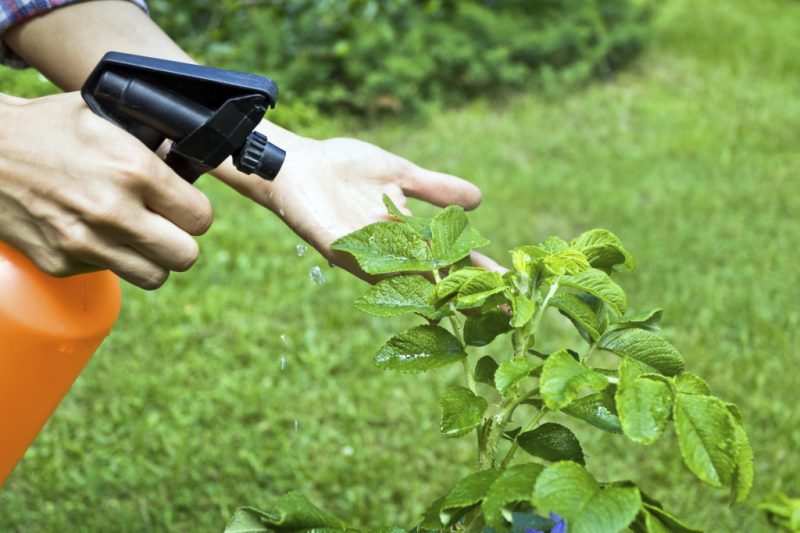
Spray with carbamide no more than once a week. The last top dressing is carried out no later than 2 weeks before harvesting. Previous application of nitrogen and complex fertilizers to the soil should be considered.
A more concentrated urea solution causes yellowing of the leaves. You can use such a liquid to control weeds and pests. Plants are treated with concentrated urea solution until buds open.
Bred in a bucket of water from 300 to 500 g of urea, sprayed garden and vegetable crops from aphids, weevils. To combat the Colorado potato beetle, a solution of 900 g of urea in 1 liter of water is required.
Features of the introduction of urea in autumn, spring
It is irrational to apply fertilizer urea in the fall, since the granules dissolve quickly, will be washed away by rain and snow. The main application only once before the start of the growing season will not provide the plants with enough nitrogen.
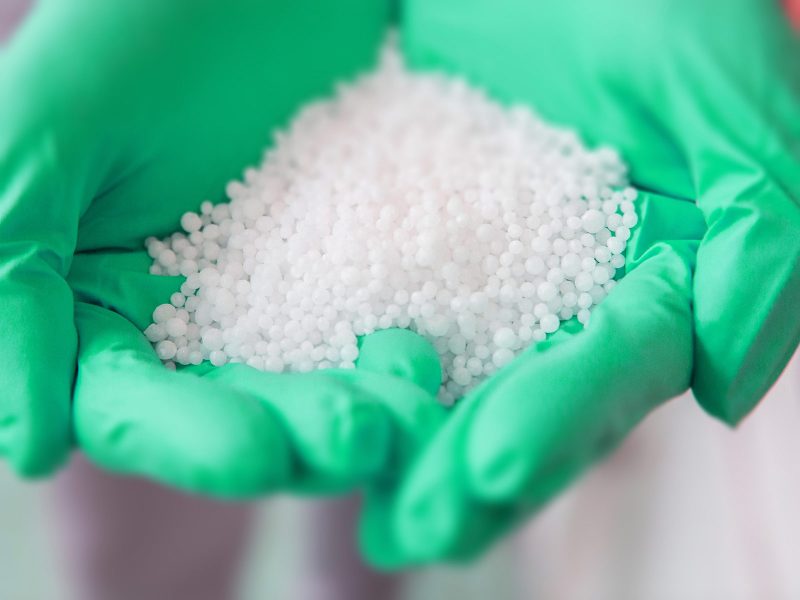
It is necessary to carry out additional root and foliar dressing at least 3-4 times.
The instruction for use provides the urea flow rate for the main application in the spring for various crops, g / m2:
- berry bushes (per 1 plant) - 50–100 when planting, 25–30 for feeding;
- fruit trees (per 1 plant) - 200 when planting, 25-30 for feeding;
- cucumber, tomato, flower and decorative crops - 15–20;
- vegetables and flowers (sheltered ground) - 25–35;
- cabbage, carrots, beets, potatoes - 20-30;
- onions, radishes, lettuce - 5-10.
In the main application, the consumption is from 50 to 350 g of urea per 10 m2. Granules are scattered and embedded in the soil when loosened in spring to a depth of 10 cm. If urea is left on the soil surface, ammonia and carbon dioxide are released, the fertilizer is destroyed.
Urea is applied directly to holes, grooves, or planting pits for trees and shrubs. Fertilizer is thoroughly mixed with soil to avoid contact of delicate roots with granules. The application rate is 4–5 g of urea per well. In the growing season, grooves are made in the soil around the stem of the plant. Urea is embedded in the soil to a depth of 5–7 cm.
Combination with other fertilizers
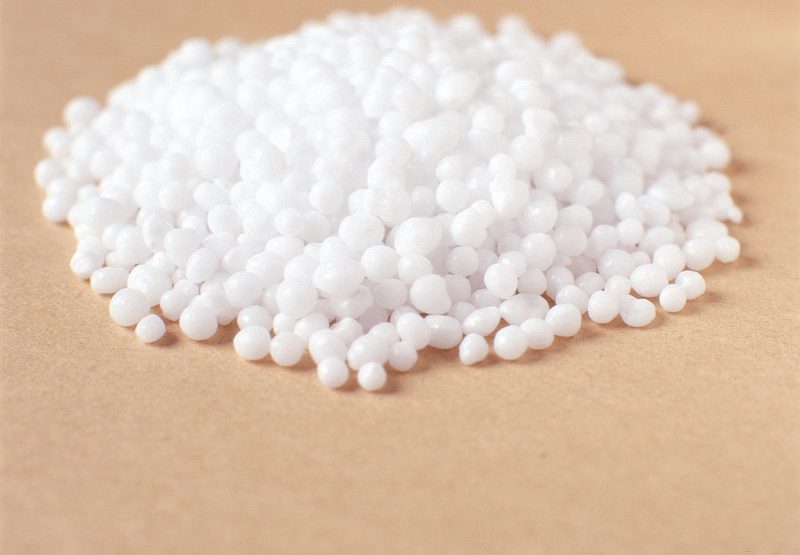
Urea is not recommended for use with alkaline compounds.A chemical reaction occurs, ammonia is released and volatilized, along with it the nitrogen necessary for plants disappears. Do not mix with ash, calcium nitrate, lime. You can make urea with compost, superphosphate, phosphate rock.
Pros and cons of using urea as fertilizer
Urea has the highest nitrogen content of all available nitrogen fertilizers. Due to the high concentration, lower doses can be used, which gives savings in transportation and application. Granular fertilizer hardly cakes, does not lose properties during storage.
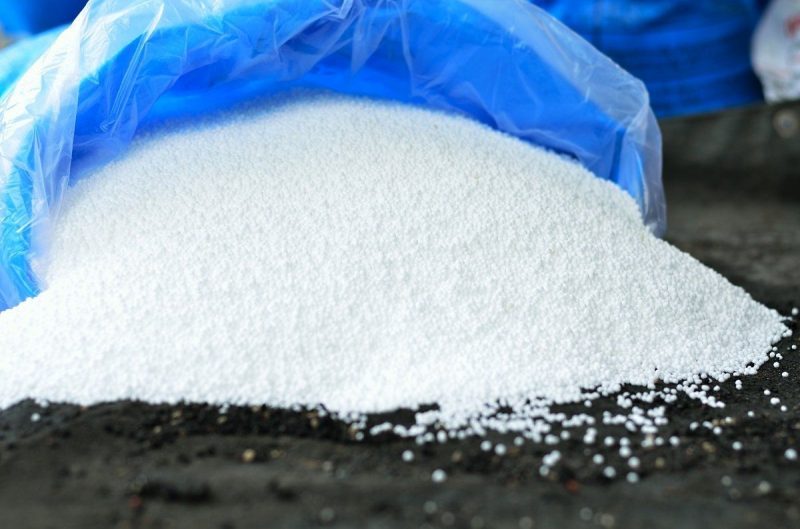
Urea protects against infections and parasites, increases the yield of all crops due to the participation of nitrogen in the synthesis of enzymes and hormones. Fertilizer granules slowly disintegrate in the soil to form ammonium, which penetrates the root hairs. A plus is the ability to quickly be absorbed by the leaves after spraying with a solution.
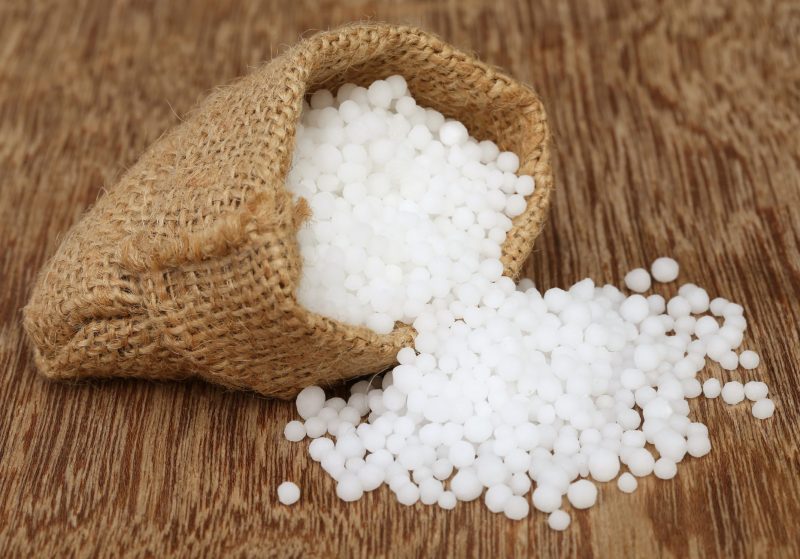
The negative sides of urea include a decrease in seed germination with an excessive content of fertilizer in the soil. The problem of nitrates in agricultural products also remains relevant. Urea is destroyed with the formation of ammonium carbonate. After some time, nitrification occurs, the soil acidifies, nitrates and nitrites occur. The latter are toxic to humans, cause unwanted changes in the blood.
One of the ways to reduce the nitrate load is the use of complex fertilizers, for example, potassium nitrate, ammofoski.












